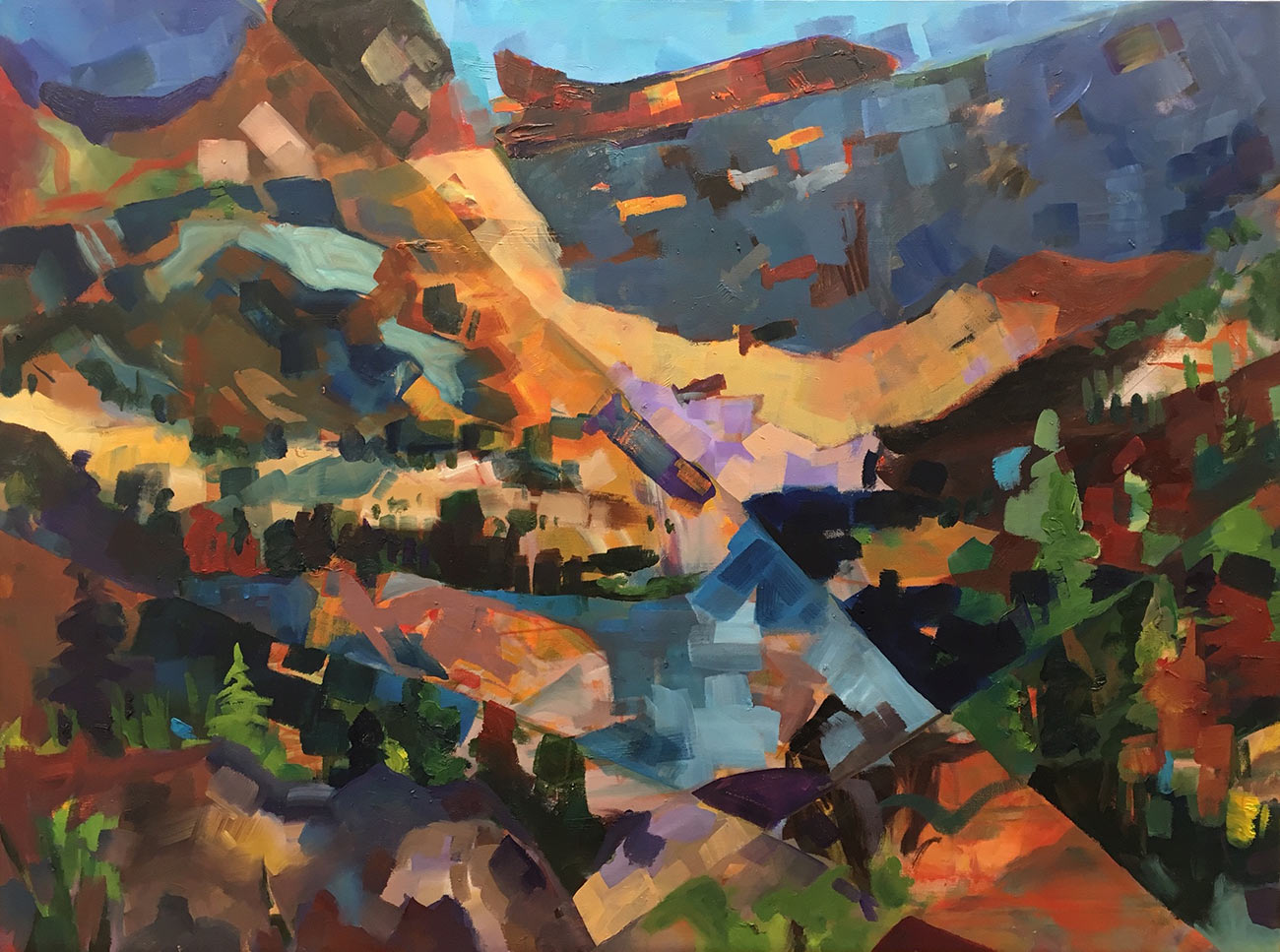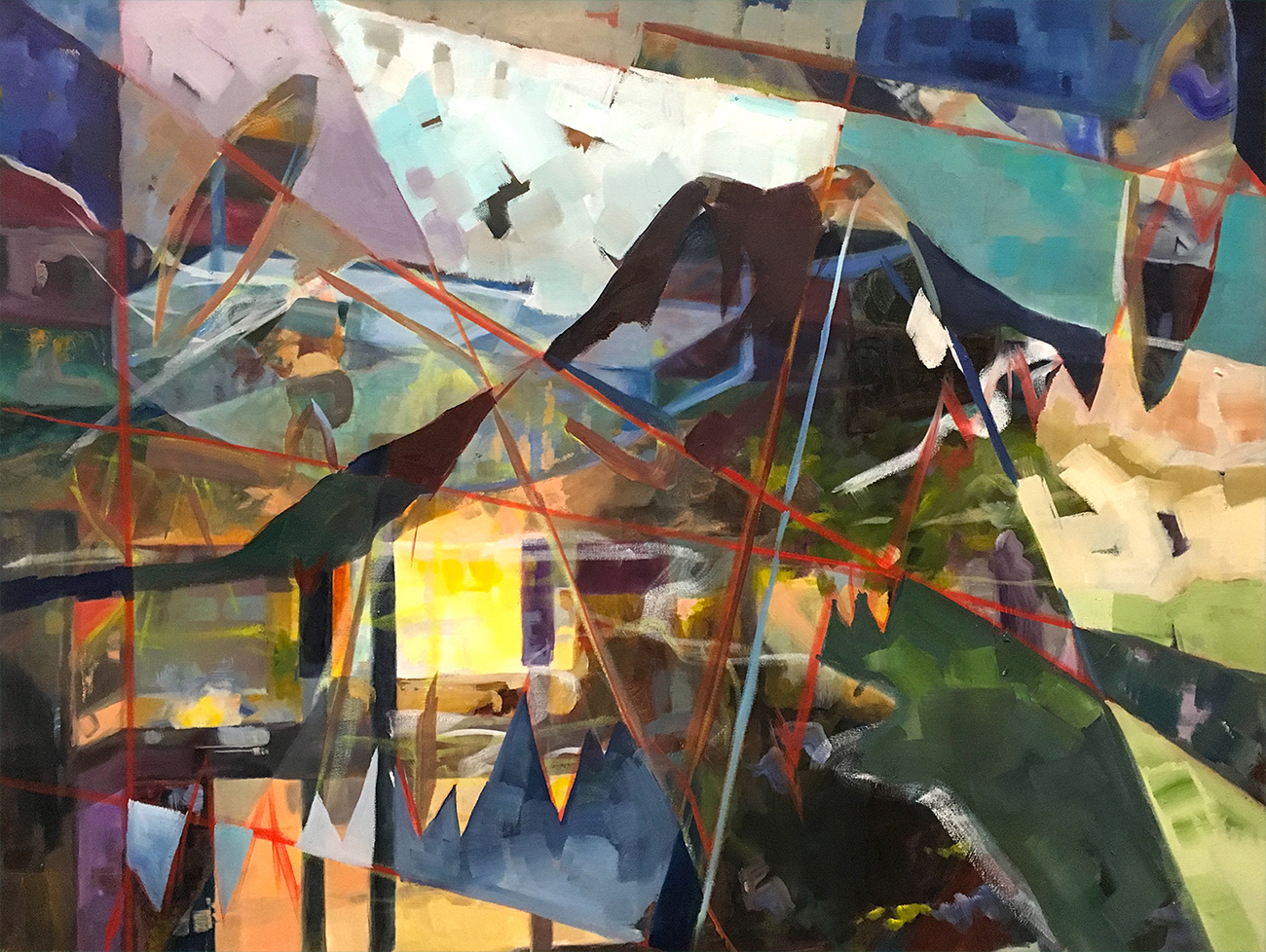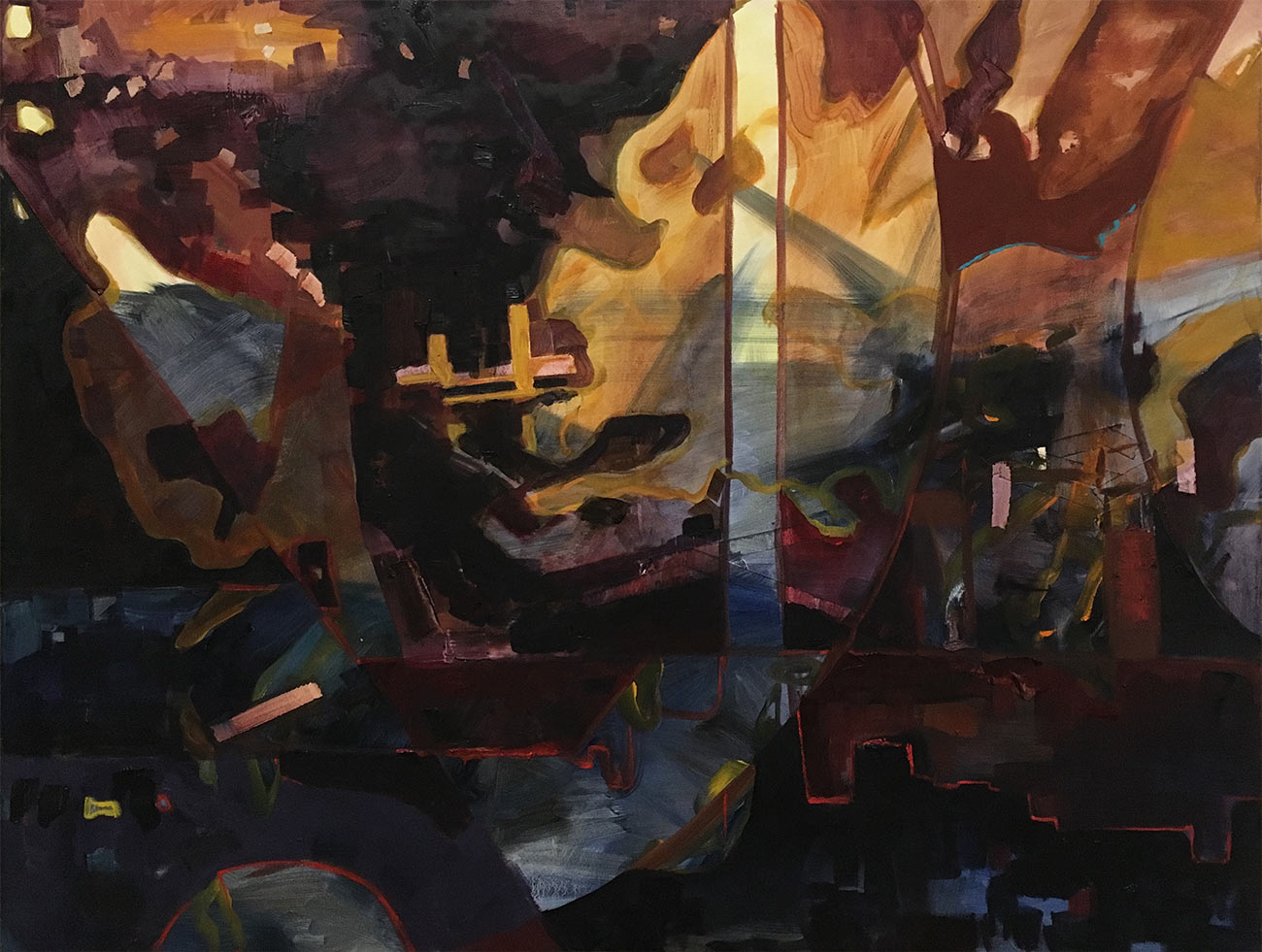People use all kinds of tools to better understand environmental problems. There are microscopes, Bunsen burners, stream gauges, satellites, and mass spectrometers, to name a few.
But there’s also the paintbrush.
After fourth year art studio major McKinna Salinas took an introductory class in wildlife ecology and conservation at UC Davis, she translated her curiosity through a series of oil paintings representing the lectures that inspired her.
After taking an introduction to wildlife conservation class, McKinna Salinas, a fourth year art studio major, created a series of oil paintings inspired by what she learned.
Those paintings, created as part of her independent study with art professor Gina Werfel, are on exhibit through this quarter at the Academic Surge building within the UC Davis Department of Wildlife Fish and Conservation and Biology. Here’s a preview:

It’s a really neat and unexpected direction to see a student take that kind of energy and creativity after exposure to our program. I think art’s role in addressing environmental problems is vastly underappreciated.
– Brian Todd
In the 1950s, the state began using airplanes to stock formerly fishless lakes in California’s high Sierra with non-native trout. These actions nearly decimated populations of mountain yellow-legged frogs, now a federally listed endangered species. In Salinas’ painting, trees, lakes and mountains await as an airplane drops fish from the sky, much like a B-52 bomber dropped weapons. “I thought it was absurd that humans would air-drop a bunch of fish into these fish-less alpine lakes so they could fish trout,” Salinas said. “It had a huge negative impact.”
The work was inspired by associate professor Brian Todd’s lecture on the topic.
“It’s a really neat and unexpected direction to see a student take that kind of energy and creativity after exposure to our program,” Todd said. “I think art’s role in addressing environmental problems is vastly underappreciated. We’re learning in science communication that storytelling is a very human characteristic that allows people to get engaged with the world around them. That can take a lot of different formats, including visually.”


The shapes of pumpjacks and an upward-moving graph meant to convey temperature rise is integrated into this piece, which was inspired by professor Eric Post’s lecture on “The Vanishing Arctic.” She wanted to show the potential destruction of the Arctic National Wildlife Refuge in Alaska if it is opened up to oil drilling.

In this painting, two canvases come together to show both the destruction and discordant beauty of dead zones, something Salinas learned about through professor Daniel Karp’s lecture on agroecology. While looking through photographs of a dead zone in the Gulf of Mexico, she was troubled by the environmental damage but she also found the colors to be interesting, even beautiful. Stark lines cut through the landscape, indicating the geometric shapes of aerial agricultural fields. It’s one of her favorites.

This painting takes a darker turn. Dark purples, dark blues. Nighttime. Salinas learned from Post-doctoral Researcher Matthew Hansen’s lecture on sensory ecology that light pollution at its most extreme can veer migratory songbirds off course, as they travel by starlight. Inside the dark painting are allusions to the Eiffel Tower, the London Bridge and—cutting up through a singular bright stripe—the 9/11 annual lighting tribute, whose bright beams reaching four miles into the sky have had the unintended effect of trapping and disorienting migrating birds.
Salinas said the conservation class helped her focus her art research on current events, which she hopes to continue throughout her senior year and beyond.
